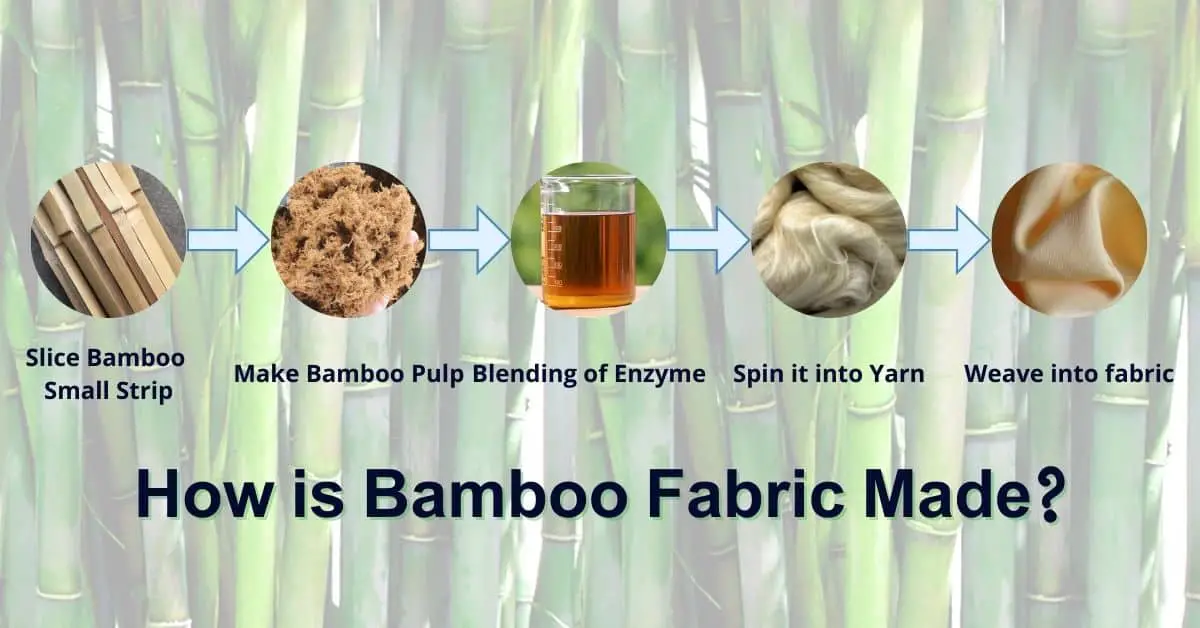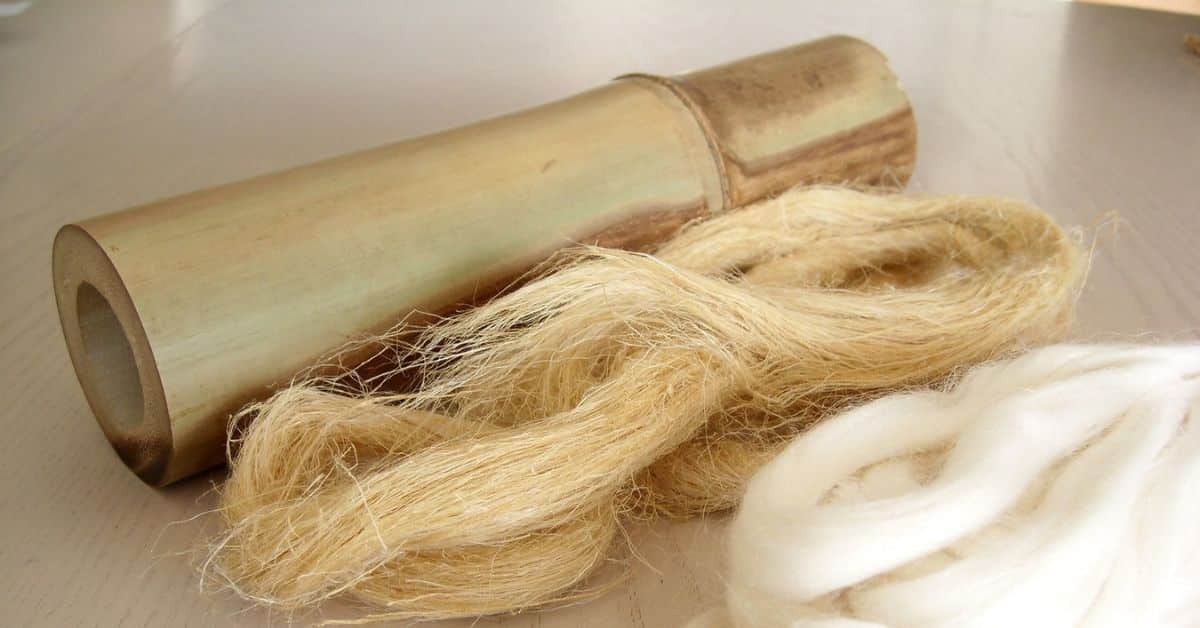Bamboo! Most people know that it is usually used for construction. However, bamboo has an interesting functionality: a soft, comfortable fabric can be manufactured from bamboo. When processed, bamboo fibers can be converted into a piece of fabric. That is softer than cotton with a silk-like drop.
Here, we will find out the fantastic bamboo fabric properties. Now time to know the bamboo fabric manufacturing process, bamboo fabric properties, advantages of bamboo fabric, as well as disadvantages of bamboo fabric.
Table of Contents
What is Bamboo Fabric?
Bamboo fabric is durable, breathable, and soft. Its fiber comes from nature and eventually returns to nature. Bamboo rayon, also acquainted with bamboo fabric. It refers to a textile that is specially made from bamboo. Bamboo fabric is acclaimed as the natural, green, and eco-friendly sustainable textile material of the 21st century. It has been used to make fabric for many years. But it is only in contemporary times that the process of turning hard and fast-growing wood into fabric has been completed.
Learn More: What is Bamboo Fabric? Types, Properties, Applications
Bamboo Fabric Manufacturing Process:
The first step in making bamboo fabric is to supply the bus as the primary material. The main component of bamboo fabric is bash, which is produced naturally. So first, you have to plant the bamboo. The best time to plant bash is Spring [March-June].

Bamboo may be harvested after new shoots appear. The rainy season is usually over, and a new dry season is about to begin. Once the bamboo is mature, it can be used to start fabric production. How bamboo fabrics are made is discussed step by step below, and the bamboo manufacturing process as well.
1. Slice Bamboo Small Strip
Identify the node and the bottom ring, also referred to as the sheathing ring, using a metal or wood saw. It also is critical to select a 45° angle line between both the nodes before cutting it. While cutting bamboo, use caution and never dump the culms on concrete or other hard surfaces.
2. Make Bamboo Pulp
To create a bamboo pulp, smash the plant and then cut the stalks into tiny pieces of bamboo fibers. Afterward, using the pulper, put chips in it, increase the temperature to 145°C in the filter press, and steam it to obtain bamboo pulp.
3. Blending of Enzyme
The bamboo fiber manufacturing process starts with immersing cellulose in a 15-20gm/L caustic soda or sodium hydroxide at 20-25°C. To make long fibers, pour the water through with a filter. Producers soak bamboo pieces in lye chemicals for about 1-3 hours to extract the cellulose. Bamboo fiber processing afterward converts the substance into fiber through spinneret.

4. Spin it into Yarn
Bamboo yarn manufacturing process to let the material dry afterward soaking so that the fiber may be separated and spun in the thread. Bamboo yarn can then be carded, combed, and spun into the bamboo fiber threads. Bamboo yarns are unique in that they have natural flexibility of 20%.
5. Weave into fabric
Manufacturers convert yarn to fabric using the weaving technique of textile manufacturing. There are many techniques to select from, and each has an impact on the cloth’s qualities, so each maker must determine which one best fits his requirements.
In the following video will know briefly, how to make fabric from bamboo?
Bamboo Fabric Manufacturing Technique
Ever wondered how bamboo fabric is made? And why is this process good for the environment? There are basically two processes of bamboo fabric manufacturing process to extract fiber from bamboo trees. Both of these methods will discuss below:
1. Crushing & Mashing Technique:
In this manufacturing of bamboo fabric process, the plants are crushed in a mash using natural enzymes and then combed and cut into yarns.
The bamboo fiber manufacturing process begins with extracting fibers from bamboo stalks. These fibers undergo pulping and are then processed either mechanically or chemically to create a sustainable and versatile textile material.
Then, the bamboo fabric produced in this way is similar to linen. This method has some environmental flaws. But it can probably be sustainable. However, it is expensive. Because it is labor-intensive. The fabrics produced are not flexible enough to be used in the increasingly popular fashion trends.
2. Boiling Technique:
The plants are boiled in a cocktail of sodium hydroxide and carbon disulfide solvents in this method of bamboo fabric manufacturing process. Both of these chemicals are harmful to health and can harm aquatic life. The pulp is made from boiled bamboo, and then yarn is cut from it. Later, the cloth is woven from this yarn, which becomes very soft.
Advantages of Bamboo Fabric
Eco-friendly fashion is becoming relatively popular in today’s era. There are plenty of other great benefits to considering buying fabrics made from eco-friendly fibers as well as organic fabrics, especially bamboo. The advantages of bamboo fabric are as follows:
1. All About the Comfort:
Clothing made from natural fibers is much more comfortable than synthetic fabrics and materials. Bamboo fabrics are not only softer than cotton materials. They boast a texture that is like silk or even cashmere. Bamboo garments also absorb moisture quickly, making them a great fabric for lightweight summer shirts and slacks.
2. Hypoallergenic and Antibacterial:
Bamboo is a natural ingredient, so it has no side effects. Therefore, there is no possibility of any allergic problem in the use of its fabric. Moreover, as it is antibacterial, it keeps your odor-free and feels and smells fresh.
3. Helps Block Ultraviolet Rays:
Several scientific types of research have proved that bamboo fabric blocks detrimental ultraviolet rays from the sun. This means that using it will protect your body from summer‘s harmful ultraviolet rays and protect it from skin cancer.
4. Breathable and Temperature Regulating:
Bamboo fabric is breathable. It promotes healthy skin as it does not ‘grip’ against the skin. Moreover, this fabric can help control body temperature. So, children’s bamboo clothing and bedding help keep kids cool when they’re hot and warm.
Is Bamboo an Eco-Friendly fabric?
Bamboo is the most environmentally friendly fabric. And not only is it 100% biodegradable. It is recognized as the most renewable resource. Excessive use of bamboo fabric will not have any bad effect on the environment. Moreover, it is easy to decompose and can adapt to the environment quickly.
No doubt that Bamboo Fabric is a sustainable fabric as well as Eco-friendly. It is less expensive and more durable but, most importantly, less harmful to the environment than organic cotton fiber. Described as a feeling like Kashmir, it is luxuriously soft. Its fabric is attractive with its amazing silky softness.
Having a lot of advantages bamboo fabric has some disadvantages also. Now time to talk about the bamboo fabric disadvantages.
Disadvantages of Bamboo Fabric
What is bad about bamboo fabric? Is bamboo fabric bad for the environment?
No, But bamboo fabric needs more water than other fabrics like cotton and other textile manufacturing processes. It is one of the most important disadvantages of bamboo fabric.
The bamboo fabric manufacturing process takes more energy to dry after washing. This is not a problem if you use a cloth line instead of a cloth dryer.
However, natural bamboo production is reducing day by day due to mass application, especially in the construction industry. That’s why we should increase bamboo cultivation and reduce the mass destruction of forests for bamboo. These are the major environmental issues and the most important disadvantages of bamboo fabric.
Although this fabric is very comfortable, it is not as durable as other fabrics. Bamboo fabric is much more wrinkled than other fabrics. Depending on where the fabric is being used, this fabric may not be the ideal choice.

Mahedi Hasan working as an Executive (Fabric Marketing) at Pengnuo Group. Graduated with B.Sc. in Textile Engineering. Before was a Top Rated content writer at Upwork, and Level 02 Seller at Fiverr, Level 02 Publisher at Ezoic. Very passionate about content writing, SEO practice, and fashion website designing. Highly Experienced fashion writer for the last 4+ years. Have extensive 7 years of experience in the wholesale clothing business.

Where can I get Bamboo fabric other than from Kandygs
I just like the valuable info you provide to your articles.
I will bookmark your weblog and test once more here regularly.
I am somewhat certain I will be told many new stuff
right here! Good luck for the next!
Thank you for sharing useful information with us. please keep sharing like this.